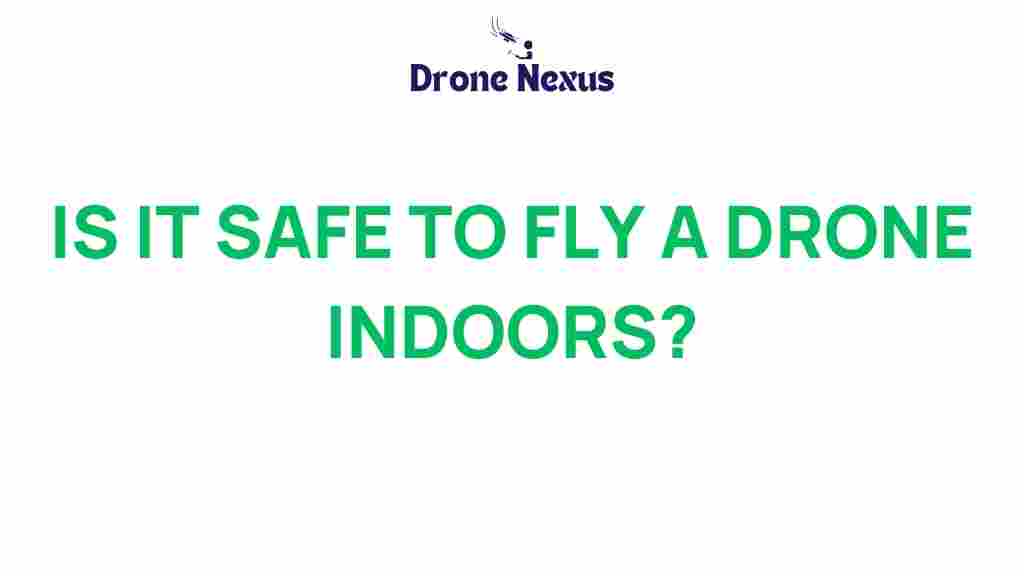Is It Safe to Fly a Drone Indoors? Understanding Drone Safety
With the rapid evolution of drone technology, enthusiasts and professionals alike are exploring various environments for flying these versatile machines. Indoor flying presents a unique set of challenges and rewards, raising an essential question: Is it safe to fly a drone indoors? This article unpacks the risks and rewards associated with indoor drone flying, with a primary focus on drone safety.
The Appeal of Indoor Drone Flying
Flying a drone indoors can be an exhilarating experience. Whether you are practicing maneuvers, capturing stunning aerial footage, or using a drone for indoor inspections, the convenience of flying indoors can be appealing. Some key benefits include:
- Controlled Environment: Indoor spaces are less affected by weather conditions, providing a stable environment for flying.
- Safety from External Hazards: You can avoid outdoor risks such as birds, other drones, and unpredictable weather.
- Practice Opportunities: Indoor flying allows new pilots to practice without the pressure of outdoor challenges.
Understanding the Risks of Indoor Drone Flying
While the benefits are enticing, understanding the risks is crucial for ensuring drone safety. Here are some potential dangers associated with flying drones indoors:
- Limited Space: Indoor environments often have confined spaces, increasing the chances of crashes.
- Obstacles: Furniture, walls, and other obstacles can pose significant risks to both the drone and the surrounding environment.
- Injury Risks: Drones can cause injury to people if not operated correctly, especially in crowded spaces.
- Regulatory Considerations: Some indoor spaces may have restrictions or regulations against drone flying.
Preparing for Indoor Drone Flight: Steps to Ensure Drone Safety
To mitigate risks associated with indoor drone flying, follow these steps to enhance drone safety:
1. Choose the Right Drone
Select a drone designed for indoor use. Smaller drones with protective frames are ideal for avoiding damage and ensuring safety.
2. Inspect Your Drone
Before flying, conduct a thorough inspection of your drone. Check for:
- Battery condition
- Propeller integrity
- Overall cleanliness
3. Identify Your Indoor Space
Understand the space where you’ll be flying. Consider the following:
- Space dimensions
- Presence of obstacles
- Ceiling height
4. Establish a Flight Plan
Map out a flight path to avoid obstacles. Communicate this plan to anyone in the vicinity.
5. Use Safety Gear
Consider wearing safety glasses and using other protective gear to minimize injury risks.
6. Set Up a Safe Zone
Designate a clear area for flying your drone, free from people and fragile objects.
7. Keep Your Drone Maintained
Regular maintenance is vital for drone safety. Ensure your drone is in optimal working condition to prevent malfunctions.
Troubleshooting Common Indoor Drone Issues
Even with careful preparation, issues may arise during indoor flights. Here are some common problems and their solutions:
1. Drone Not Responding
If your drone becomes unresponsive:
- Check battery levels and recharge if necessary.
- Ensure the remote control is functioning correctly.
2. Difficulty Maintaining Altitude
If your drone struggles to maintain altitude:
- Inspect the propellers for damage.
- Calibrate the drone’s sensors according to the manufacturer’s instructions.
3. Crashes and Collisions
In the event of a crash:
- Assess the drone for damage.
- Review your flight path and make adjustments for future flights.
4. Signal Interference
If your drone loses signal:
- Check for any electronic devices that may be causing interference.
- Fly in open areas away from Wi-Fi routers or other signals.
Conclusion: Embracing the Rewards of Indoor Drone Flying
Flying a drone indoors can be both rewarding and exhilarating, but it is essential to prioritize drone safety at all times. By understanding the risks, preparing adequately, and troubleshooting effectively, you can enhance your indoor flying experience. Remember that responsible flying not only protects your drone but also ensures the safety of those around you.
For more detailed guidance on drone safety practices, explore additional resources available at Drone Safety Resources.
Ultimately, with the right precautions and respect for your surroundings, you can enjoy the thrill of indoor drone flying safely. Happy flying!
This article is in the category Safety and created by DroneNexus Team
